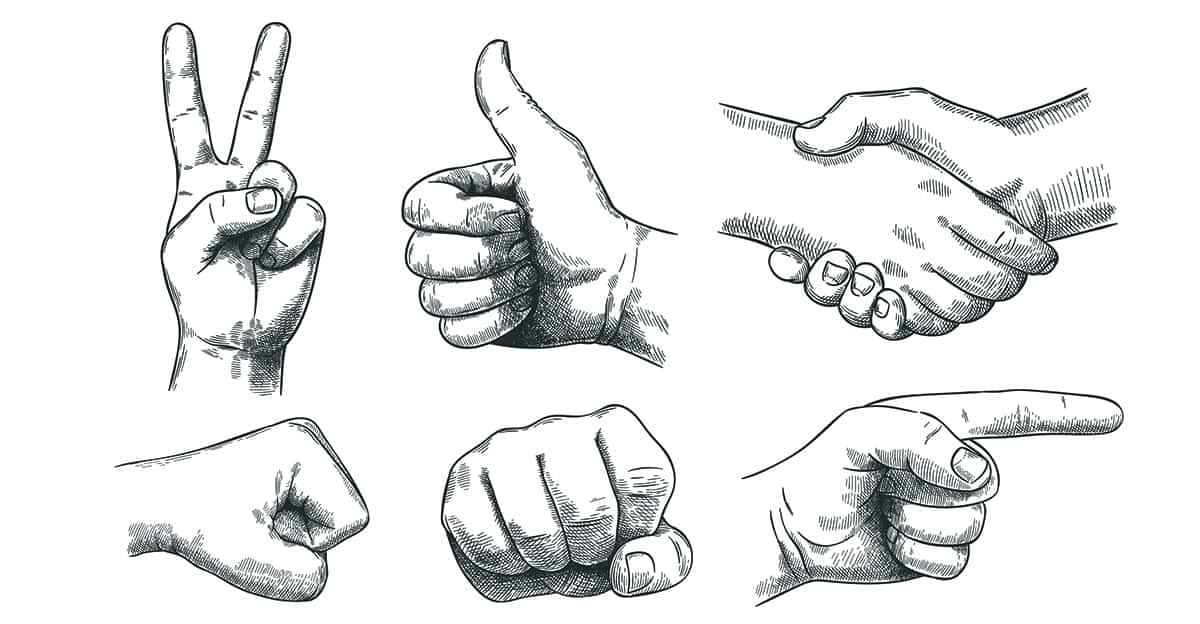
Introduction
Drawing hands can be difficult, despite the fact that they are among the most expressive body parts. It is necessary to comprehend the anatomy, dimensions, and movement of hands in order to draw them correctly. This tutorial will assist you in investigating strategies and tactics to enhance your hand drawing abilities.
Comprehending Hand Anatomy
It is essential to comprehend the structure of hands before learning how to draw them. The bones, muscles, and joints that make up the hands enable flexibility and complex motions. The thumb, which functions differently from the other fingers, is one of the five fingers on each hand. When drawing hands, paying close attention to the anatomy will help you achieve realistic proportions.
The palm has metacarpal bones, and the fingers have three major portions called phalanges. The thumb is angled to allow for rotation and has two phalanges. You can learn how hands flex, fold, and grab objects by paying attention to these subtleties. Practice with actual hands or anatomical references to enhance your accuracy in reproducing their contours.
Selecting the Appropriate Role
Drawing hands requires experimenting with various poses and motions. There are innumerable ways to depict hands, such as closed, open, resting, or holding objects. Begin with basic poses such as a fist or a relaxed hand. After you feel at ease, proceed to dynamic positions, which give your drawings more life and emotion.
Because perspective alters how fingers overlap or foreshorten, positioning is important. You can learn about angles and proportions by looking at your own hand in front of a mirror. You may capture realistic hands in a variety of poses by drawing from a variety of sources.
Fundamental Methods for Sketching Hands
It is beneficial to begin with basic forms when learning how to draw hands. Start by drawing the palm as a trapezoid or rectangle, and then use cylinders or elongated ovals to add the fingers. You can keep the right proportions and structure by using this strategy. It is simpler to modify shapes as necessary when light lines are used initially.
Add joints, nails, and creases to the fingers to further develop them after the fundamental outlines have been made. Take note of the hand’s delicate curves and contours. You can add depth and realism to your drawing by using shading. To become proficient in these methods, keep in mind that observation and practice are essential.
Including Textures and Details
Hands are distinctive due to their numerous minute characteristics. Drawing hands realistically requires including skin folds, knuckles, and nails. Note the highlights and shadows produced by the hand’s interaction with the light. You can use this observation to provide your drawings more depth and dimension.
Use textures like veins or faint wrinkles sparingly to add authenticity. Don’t make your drawing too complicated at first. Pay attention to natural curves, appropriate proportions, and seamless transitions. You will gain the ability to successfully integrate increasingly complex details with practice.
Common Errors to Steer Clear of
Ignoring proportion is one of the most frequent errors made when learning to draw hands. Overly lengthy or short fingers can give the impression that the hand is not real. Drawing rigid hands is another error; for a realistic effect, natural movement must be captured. Because hands typically have a variety of finger postures, avoid drawing all of the fingers parallel.
Another typical mistake is to rush the drafting process. Hands need to be patient and watchful. Spend time researching references, creating several sketches, and then gradually improving your drawings. You can more effectively enhance your hand-drawing abilities by correcting these errors.
Practice and Advancement
Consistent practice is essential to becoming proficient at drawing hands. Every day, set aside specific time to draw hands in various poses. To practice, use real models, reference images, or even your own hand. Maintaining a hand sketch journal allows you to monitor your development over time.
Try a variety of styles, including stylized, cartoon, and realistic hands. The principles of proportion, structure, and movement are still crucial, but each style calls for a different strategy. You will become much more confident and proficient at drawing hands over time.
Reference Table for Sample Hand Drawings
| Hand Position | Description | Tips for Drawing |
|---|
| Open Palm | Fingers spread, palm facing viewer | Start with basic shapes, refine fingers |
| Fist | Fingers curled, thumb outside | Focus on knuckles and thumb placement |
| Holding an Object | Fingers wrapped around an item | Observe finger overlap and grip tension |
| Relaxed Hand | Slightly bent fingers, resting pose | Pay attention to subtle curves and shading |
In conclusion
Drawing hands is a difficult yet rewarding aspect of drawing. Iimportant to understandhend anatomy, practice various positions, and hone your skills. You can capture the expressiveness and inherent beauty of hands by investing time in learning and practicing. Gaining proficiency with hands will improve your drawing abilities. Hands are strong instruments for telling stories in art.



